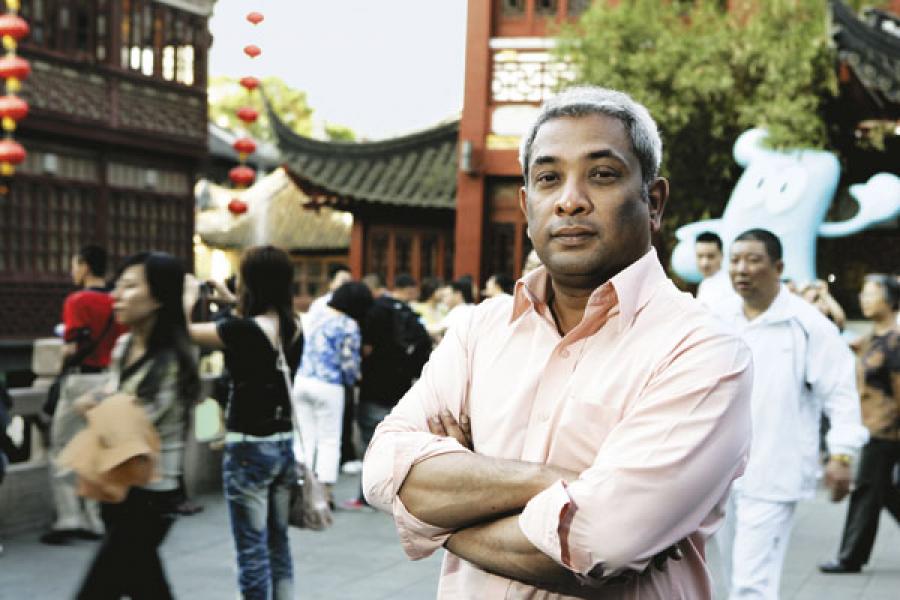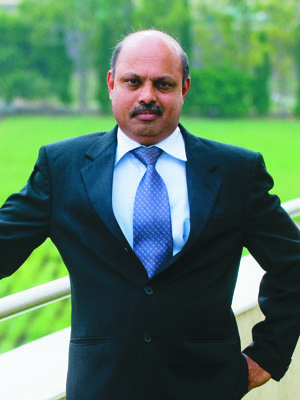
Indian Firms Cross the Himalayas
A clutch of Indian companies have slogged hard to dig deep roots in China. They now look set to reap the rewards
M.S. Unnikrishnan remembers a strange phenomenon that began to affect his firm Thermax’ prospects in the international market in the early years of the last decade. Absorption chillers (used for cooling machinery) were one of Thermax’ biggest product lines and sold in 40 countries. All this while, the managing director of Thermax knew that his biggest competitors were either from Japan or the US. But gradually, a set of aggressive Chinese manufacturers had begun to take centre stage.
Unnikrishnan quickly marshalled his troops to mount an offensive. “To compete against China globally, we had to sell in China too,” he says. Going to China made complete sense. One, it gave Thermax the opportunity to understand its rivals and allowed it to utilise some of the raw materials and local expertise. Two, there was no running away from the fact that China was the biggest market within that category.
Back in 2003, there weren’t too many Indian firms operating in China. There was no information on how to stage an entry — no consultants, no market researchers. There were doubts about whether the Chinese would accept an Indian product. But they roughed it out. “Chinese price points were way lower than ours. But we wanted to get an order to experience how to sell, and how to install in China. So we didn’t get into [a] price point game,” says Unnikrishnan. Despite the fact that the operations lost money for two years, Thermax went ahead and set up a factory in China. It got worse once the global meltdown hit. But now, things are back on track. Orders are trickling in and China is now a crucial part of Thermax’ global operations. While it has subsidiaries in the US and Europe, manufacturing is concentrated only in China and India. Soon, Thermax plans to significantly expand its capacity in China, and bring in new products to drive growth.
It isn’t just Thermax who’s bitten the bait. Tata Consultancy Services (TCS) is planning to ramp up its presence in China from 1,000-odd people to about 5,000 in the next four years, and has set its sights on cracking the big deals. Suzlon chairman Tulsi Tanti has seen demand for wind energy gallop in the last one year, as the country set clear targets for promoting renewable energy. In the next 10 years, China is expected to set up 100 GW of installed wind power, which will make it the world’s largest wind power producer. “All this has created a very attractive market for companies like ours, and now the journey must continue — more remains to be done to create a truly level playing field in line with the local market,” says Tanti.
Suzlon’s early start may certainly help. In 2006, it was among the first international wind power companies to invest in China, plonking down $100 million in a blade making facility, one of the largest investments made by an Indian company in China till then.
Now consider packaging giant Essel Propack. It too made an early call, back in the mid-1990s. “Back then, China wasn’t a big story in India,” says R. Chandrasekhar, COO, Essel Propack. Today, 20 percent of its global revenues come from China — the country figures in its top three markets globally both in revenues and profitability. Essel also figured that it made more sense to use its laminate making facility in China to feed the entire Americas. Setting up a plant in the US would have been much more costly. Besides, the domestic Chinese market gives it the anchor volumes to break even a lot faster. Essel now has three plants in China and will increasingly use it to cater to Japan and Korea.
But there were initial hiccups. Initially, Essel looked at a joint venture plan: It would invest in the equity and provide the technology; the partner would provide the local know-how. After spending a year looking for a partner, Essel dumped the plan. “It was a turbulent experience,” says Chandrasekhar. “There was a complete lack of alignment of our business goals and those of the partners. The way China is structured, there is no transparency in accounts and legal dealings.”
Essel at least had a choice. In some cases, joint ventures are an imperative. For instance, Mahindra & Mahindra’s tractor business has been in China for almost five years now. Today, it sells more than 28,000 tractors a year and generates country revenues in excess of Rs. 540 crore. Some of that is thanks to two joint ventures that have helped it complete its product range. “A local product range became a critical factor considering price and reliability expectations of Chinese consumers — Indian designs and exports from India were too expensive,” says Anjanikumar Choudhari, president (farm equipment sector), M&M. For M&M, the joint venture is crucial also because in China, government involvement in business is high. In M&M’s case, the joint venture partner engages and keeps in close contact with the government.
Getting a local ally like a provincial government or a government trade promotion agency can substantially ease the pains of starting up. When Essel Propack went to China, it set up base in Guangzhou province. When it applied for a business license to Guangzhou Economic Trade Development Agency, initially, it denied Essel 100 percent ownership. But after two months, it cleared the proposal on the ground that Essel was bringing in a technology that didn’t exist in China and 25 percent of the product would have to be exported. From this stage on, the government agency became like a foster parent for Essel. “We didn’t use any consultants — they started helping in a big way,” says Chandrasekhar. It went to the extent that they even helped Essel with niggling things — like looking for apartments and hiring interpreters!
In China every province has to meet some big targets for foreign investment. So if they feel that you are worth their while, they’ll go all out to help you. Prakash Menon, president, NIIT China, recounts an incident where the mayor of Wuxi province wanted NIIT to set up an IT training facility. But NIIT said it needed infrastructure. “[That] became a single-window solution for us. He had the infrastructure ready in a week!” says Menon. NIIT trained 1,500 students in Wuxi. Then the mayor said he wanted them to train 10,000 students. Within a week, NIIT had 300,000 sq ft of space to enable that!
Similarly, when TCS was looking for a location for its China operations, it happened to mention to the mayor of Hangzhou that finding vegetarian food was a problem. “When I went there again three months later, they had set up a vegetarian restaurant in the city for us!” says Girija Pande, EVP and head, TCS, Asia-Pacific.
Of course, the effects of a red carpet welcome don’t last long. “Recently we participated in a trade show in China where we displayed some of our heavy machinery,” recalls the MD of an Indian company. A man walked in with a video camera and filmed the machine on display from all possible angles. “I was horrified and I tried to stop him but nothing worked. Before you know it, somebody else will take your structure and copy it,” he says.
Most Indian firms like Thermax have figured out how to deal with copycats. “Chinese companies are very good at standardised products and mass-manufactured items. If an Indian company has a skills-intensive product and a hi-tech and solutions orientation, it can easily score over local companies,” says Unnikrishnan. So Thermax didn’t target run-of-the-mill projects — like air-conditioning for buildings. Instead, it went after unconventional projects like cooling of coal mine shafts.
“If you try and compete with a Chinese company on just cost, it will be extremely difficult to succeed,” says Dinesh Gupta, president, Bry Air (Asia). “Instead, focus on large-scale operations, and take advantage of economies of scale and building a brand,” he adds.
NIIT’s experiences provide another pointer on how to compete. When it entered in 1997, it was pretty much the only player in the segment. Today, Shanghai alone has some 200 IT training institutions, but NIIT continues to be pretty much the most successful. “[The local institutions] lack depth. Even though Chinese players also are getting bigger, they tend to be localised — very few have a national presence,” says Menon. NIIT, on the other hand, has continued to offer more sophisticated services as its understanding of the local market has improved over the last 13 years.
(Additional reporting by Ashish K. Mishra)
(This story appears in the 30 April, 2010 issue of Forbes India. To visit our Archives, click here.)
Post Your Comment
















